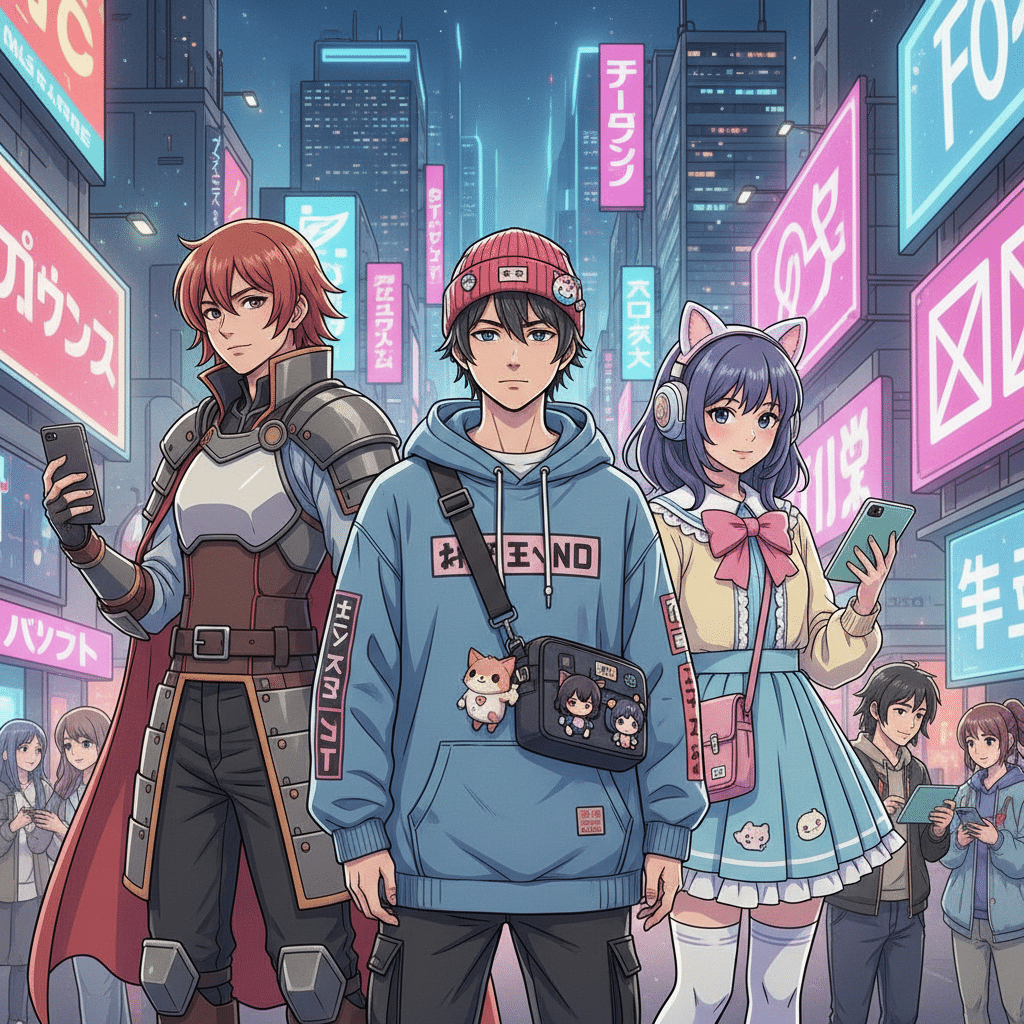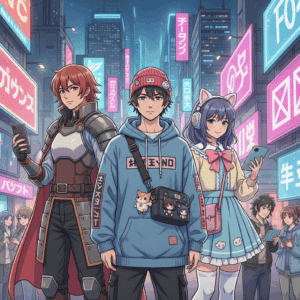Global expansion of otaku culture
The otaku culture It has ceased to be an exclusively Japanese phenomenon and has spread worldwide, boosting creative industries and new forms of social interaction.
This global expansion is the result of the dedication of fans who invest numerous hours in activities related to anime and manga, generating an international economic and social ecosystem.
Definition and dedication of the average otaku
The term otaku It describes a committed fan who spends between 20 and 30 hours a week watching series, reading manga, or collecting objects related to the culture.
This level of dedication creates a deep connection with the otaku universe that transcends mere entertainment and is reflected in active participation in forums and the creation of original content.
Therefore, the average otaku not only consumes content but also contributes to the expansion and dynamism of this global subculture.
Forms of social interaction and international communities
Otaku communities use digital platforms such as Discord, Telegram, and MyAnimeList to maintain social interaction, strengthening their bonds beyond national borders.
In addition, organizing in-person events, such as conventions and festivals, allows fans from different countries to share their passion and strengthen their sense of community.
In cities like Tokyo, entire neighborhoods are dedicated to otaku culture, replicating this dynamic in other parts of the world through fairs and themed gatherings.
Customs and participation in anime culture
He collective consumption It is fundamental in anime culture, as it strengthens the bonds between fans through shared events and activities.
Otaku customs include participation in face-to-face meetings and online interaction, generating a diverse and global community experience.
This participation helps to keep the passion for anime alive and extend its cultural influence in multiple regions.
Collective consumption and in-person events
Anime marathons and themed conventions encourage shared consumption, allowing fans to enjoy their favorite series together.
Live events offer spaces where fans can exchange ideas, show off costumes, and participate in contests that revive iconic characters.
These activities strengthen the sense of community and collective identity within the otaku movement.
Communities on digital platforms
Platforms like Discord, Telegram, and MyAnimeList facilitate the creation of global communities that share opinions, news, and recommendations.
In these digital spaces, otakus organize debates, create content, and connect regardless of geographical distance.
Online communication has become crucial to maintaining the cohesion and dynamism of the otaku phenomenon internationally.
Importance of neighborhoods and themed festivals
In Japan, neighborhoods like Akihabara and Nakano are cultural epicenters for otaku with specialized shops and constant events.
Outside of Japan, themed festivals and local fairs are vital for cultural dissemination, bringing fans together and highlighting global franchises.
These physical spaces represent meeting points where otaku culture is experienced intensely and generates social and economic impact.
Fashions and cultural expressions in the otaku world
Otaku fashion is characterized by a unique mix of garments and accessories that reflect a passion for anime and manga, creating a distinctive and easily recognizable style.
This cultural expression has transcended Japan and today influences global trends, uniting fans through their way of dressing and presenting their hobby.
Distinctive styles in clothing and accessories
Otaku clothing often includes t-shirts with iconic characters, vibrant prints, and designs inspired by popular series that stand out for their originality.
In addition, accessories such as plush toys, keychains, and figurines are integrated into the look, allowing fans to visibly display their passion in their daily lives.
This style has become established as a form of identity that connects followers from different cultures under the same visual language.
Cosplay as an international phenomenon
Cosplay has ceased to be an exclusively Japanese practice and has become a global phenomenon present at events and conventions in many countries.
Portraying characters through elaborate costumes allows otakus to express creativity, admiration, and be an active part of their community.
Cosplay also creates a multicultural meeting space where different traditions and styles within otaku culture are celebrated.
Collectible items and their meaning
Collectible items such as figures and statuettes are more than just souvenirs; they represent symbols of otaku dedication and passion for their favorite franchises.
These elements have an emotional and cultural value that strengthens the sense of belonging and serve as a point of connection between fans from different countries.
The increase in global demand for collectibles reflects the economic and social importance that this hobby has achieved globally.
Economic impact and collaborative movements
He global anime market It reached a value exceeding $25 billion in 2025, demonstrating its international economic relevance.
This growth is linked to the expansion of streaming, the sale of collectible products, and the commercial success of anime films and series.
Growth of the global anime market
Streaming has allowed simultaneous access to world premieres, increasing audience and profits in various regions.
The sale of collectible figures and other items related to popular series drives a constantly expanding and enthusiastic market.
Furthermore, the box office success of franchises like Demon Slayer boosts the visibility and profitability of anime globally.
Collaboration and community content production
Fan-subs, created by fans, promote the dissemination of anime in various languages and encourage active community participation.
This collaborative work is also reflected in the promotion of small publishing houses and the organization of events that connect different regions.
Furthermore, anime influences local narratives, allowing for cultural identification among young people from diverse backgrounds.






